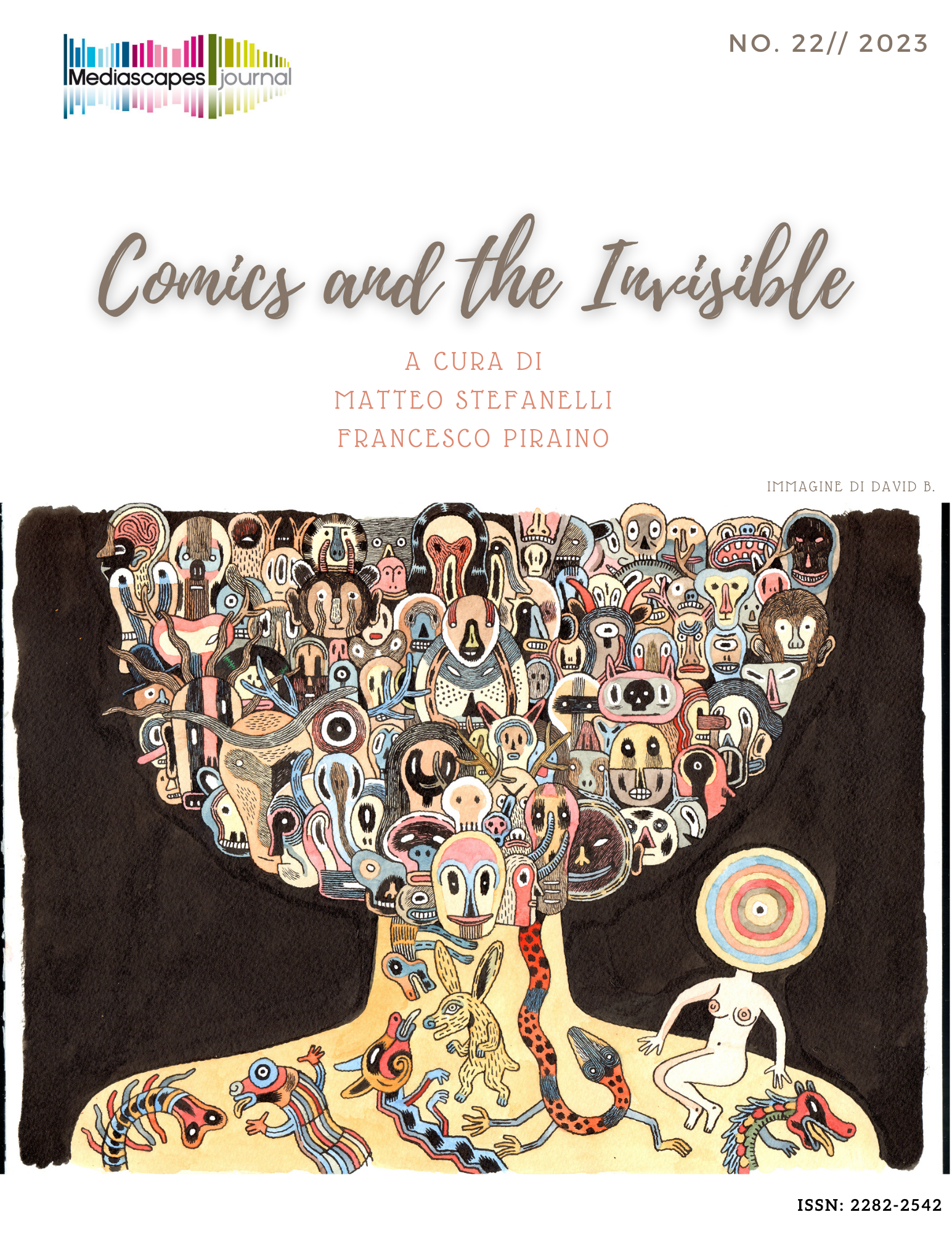How to Make the Invisible Visible?
Some Innovative Approaches in 21st-Century Comic Art
Keywords:
comics, digital comic art, the invisible, trauma, empathyAbstract
This study aims to analyze the conceptual and aesthetic strategies of three cutting-edge works employing comics to give form to the invisibility of trauma in 21st-century history and culture: In the Shadow of No Towers (2004) by North American cartoonist Art Spiegelman on the September 11 terrorist attacks in the United States; Une éternité à Tanger (2004) by the African illustrator Faustin Titi and African journalist Eyoum Ngangué on the overlooked tragedy of immigration from Africa to Europe; and Astrodoubt and The Quarantine Chronicles (2020-ongoing) by the Italian artist Luca Buvoli on the Covid-19 pandemic which broke out in early 2020. These works share the impulse to visualize the invisible and narrate what resists narrative articulation, and raise awareness. They encapsulate what can be described as the “daring of imagination” in the face of trauma. The shadow silhouette of two towers no longer standing, New York’s Twin Towers, is the key image with which Spiegelman’s book opens: the presence of an absence. Blending the personal and the political as it addresses the trauma of the 2001 terrorist attacks in New York, the book comprises ten strips on memory and loss, and includes references to Spiegelman’s own Maus book on the Holocaust, as well as reprints of turn-of-the-20th-century comic strips. Published the same year as Spiegelman’s work, the comic book Une éternité à Tanger is about the trauma of displacement. It depicts the failed crossing of a young African boy, Gawa, from Tangiers to Europe seeking a brighter future. Leaving his native West African city, Gawa hopes to escape the turmoil of his home country but, following a journey fraught with dangers and betrayals, he is stranded in Tangiers, just in sight of his final goal. There he begins to tell his story, emblematic of thousands of immigrants. Narrating from an African perspective the story of the many invisibles like Gawa, Titi and Ngangué offer an intimate account of one of the great sociopolitical tragedies of our time. Since spring 2020, Buvoli has created a series of tragicomic visual narratives, presented on Instagram, where the mediums of comics, painting, and the digital blend. Their protagonist is the astronaut Astrodoubt, an individual of unspecified gender, race, and age, grounded by the pandemic. This study wishes to analyze how Buvoli’s work explores the expressive and formal possibilities of the ninth art and sequential narratives in the context of a multi-media and multi-disciplinary artistic inquiry on vulnerability, trauma, time and space, from the cosmos to life on Earth. In the analysis of these three projects, the notion of empathy will be addressed, investigating the works’ ability to mobilize conscience.Challenging the boundaries of visual and narrative dimensions in contemporary culture, these works of comics offer a rich material for reflecting on the ways in which the medium affords groundbreaking explorations of the invisible, time, memory and space with a great impact on urgent existential, social, and cultural issues of our time.
Downloads
Published
How to Cite
Issue
Section
License

This work is licensed under a Creative Commons Attribution 4.0 International License.
Mediascapes Journal is published under a Creative Commons Attribution Licence 4.0.
With the licence CC-BY, authors retain the copyright, allowing anyone to download, reuse, re-print, modify, distribute and/or copy their contribution. The work must be properly attributed to its author. It should be also mentioned that the work has been first published by the journal Anuac.
Having published these contributions for the first time, Mediascapes Journal will have the right to publish them integrally or partially as reprints or possibly as part of a thematic issue, in both digital and printed format.
It is not necessary to ask further permissions both to author or the journal.


